Self-Diagnosed Autism

Exploring a New Path to Neurodivergent Recognition
In recent years, self-diagnosed autism has garnered increased attention within the autistic community and beyond. As barriers to formal diagnosis—such as high costs, long wait times, and systemic disparities—persist, many individuals turn to self-assessment and community support to understand their neurodivergence. This article delves into what self-diagnosed autism entails, its legitimacy, the resources available, and the profound impact on personal identity and societal perception.
Defining Self-Diagnosed Autism and Its Significance
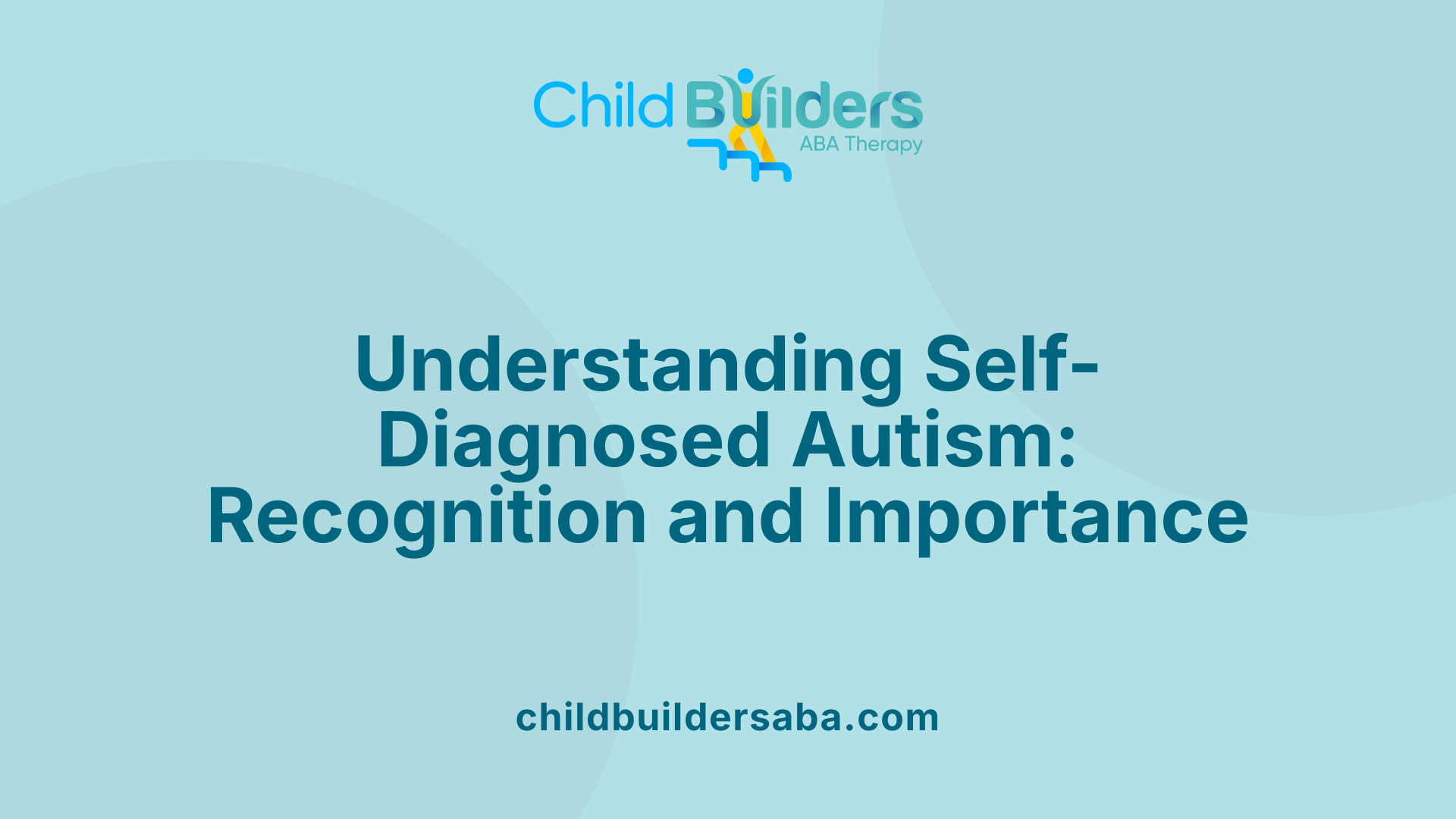
What is self-diagnosed autism?
Self-diagnosed autism refers to individuals who recognize themselves as autistic based on their personal research, experiences, and reflection, rather than through a formal assessment by a healthcare professional. This process often involves exploring symptoms, traits, and behaviors that align with autism diagnostic criteria, using online resources, community support groups, and self-assessment tools like the RAADS-R or AQ. Although it does not replace a clinically confirmed diagnosis, self-diagnosis is regarded as a meaningful and valid step for many, especially when official diagnosis is difficult to obtain.
Why is self-diagnosis important?
Self-diagnosis is especially significant in light of barriers to formal diagnosis, such as high costs, long waiting times, and systemic inequities that disproportionately affect marginalized communities. For many adults and young people, access to qualified healthcare professionals can be limited by geographic, financial, or social factors.
Research supports the accuracy of self-assessment tools, showing that individuals who self-identify often share similar characteristics and traits with medically diagnosed autistic persons. This recognition can foster self-understanding, validation, and a sense of belonging within the neurodivergent community.
Self-diagnosis also acts as a catalyst for seeking further help, joining support networks, and advocating for oneself. It provides an essential pathway for those facing systemic obstacles or personal doubts about the formal diagnosis process.
Barriers to formal diagnosis affecting self-identification
Many individuals who suspect they are autistic encounter hurdles to obtaining an official diagnosis. Common challenges include the high costs of assessment, lack of insurance coverage, long waitlists, and difficulties in finding healthcare providers knowledgeable about adult autism or specific cultural considerations.
These barriers may lead individuals to rely on self-diagnosis, which, while not a substitute for professional assessment, can still serve as a meaningful form of self-recognition. Many community groups and online platforms validate self-identification, emphasizing that understanding oneself is valid—even without a formal label.
In summary, self-diagnosed autism plays a vital role in ensuring that individuals who might otherwise remain unsupported can access community, resources, and self-awareness. It helps break down barriers, promote acceptance, and foster a more inclusive understanding of neurodiversity.
Validity and Recognition of Self-Diagnosis in Autism
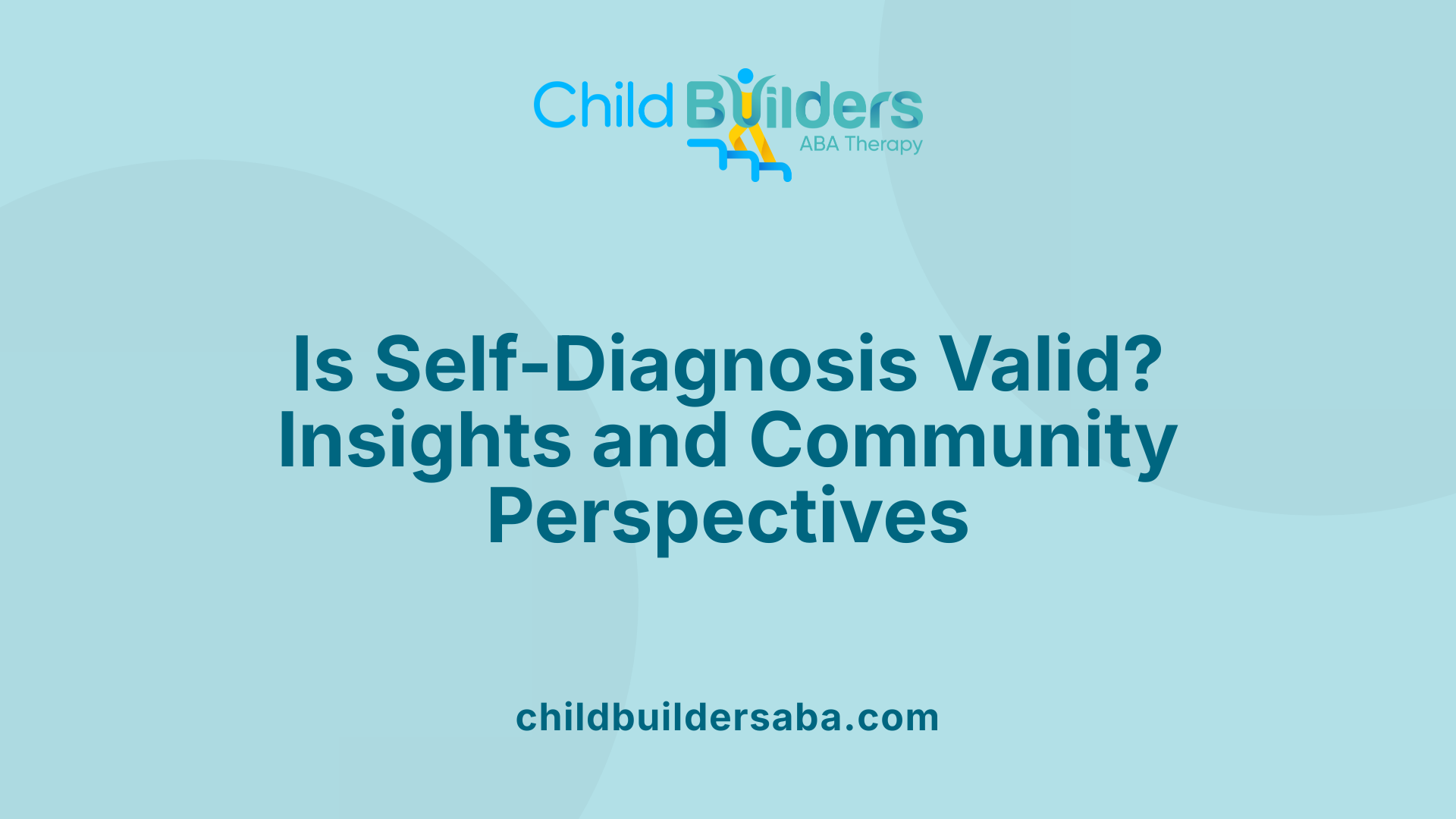
Is self-diagnosis considered valid?
Self-diagnosis of autism is widely regarded as valid within the autistic community and backed by recent research. Many individuals, especially those facing obstacles like high costs, lengthy waitlists, and limited access to seasoned healthcare professionals, turn to self-assessment to better understand themselves.
Research indicates that self-diagnosed adults display similar autism-related traits, experiences of stigma, and impacts on their quality of life as those with official diagnoses. Studies utilizing tools like the Autism Spectrum Identity Scale (ASIS) show that self-identified individuals interpret and resonate with autism traits in comparable ways to diagnosed groups. These findings suggest that self-diagnosis can accurately reflect genuine autistic characteristics.
While having a formal diagnosis from a qualified healthcare professional remains crucial for accessing tailored services, accommodations, and support, self-diagnosis often serves as a meaningful first step. It allows individuals to access communities, online resources, and mental health services that affirm their identity.
Community and scholarly perspectives
Within the community, self-identification is increasingly accepted, especially when individuals have thoroughly researched autism traits and experienced barriers to formal evaluation. Scholars have also shown support; for instance, studies confirm that self-diagnosed adults exhibit psychometric profiles similar to diagnosed individuals.
Research supports the credibility of self-assessment tools, such as the RAADS-R and Autism Quotient, which correlate highly with comprehensive assessments.
However, some professionals caution that self-diagnosis should not replace formal evaluation for clinical purposes. Nonetheless, the prevailing view recognizes self-diagnosis as a valid experience, particularly for personal understanding and social validation.
Research findings supporting self-assessment
A study examining over 1,000 adults across the US found that self-diagnosed participants reported levels of stigma, self-esteem, and quality of life akin to those with formal diagnoses. The structure of tools like ASIS remained consistent across both groups, reinforcing the validity of self-assessment.
Further, research by McDonald (2020) demonstrated no major psychometric differences between diagnosed and self-identified groups, emphasizing that self-diagnosed adults often share deep similarities with their diagnosed counterparts.
In conclusion, while a formal medical diagnosis remains the official standard, current evidence underscores that self-diagnosis is a valid, meaningful, and accepted way for many individuals to understand their autism traits and access community and support networks.
Differences Between Self-Diagnosis and Professional Diagnosis
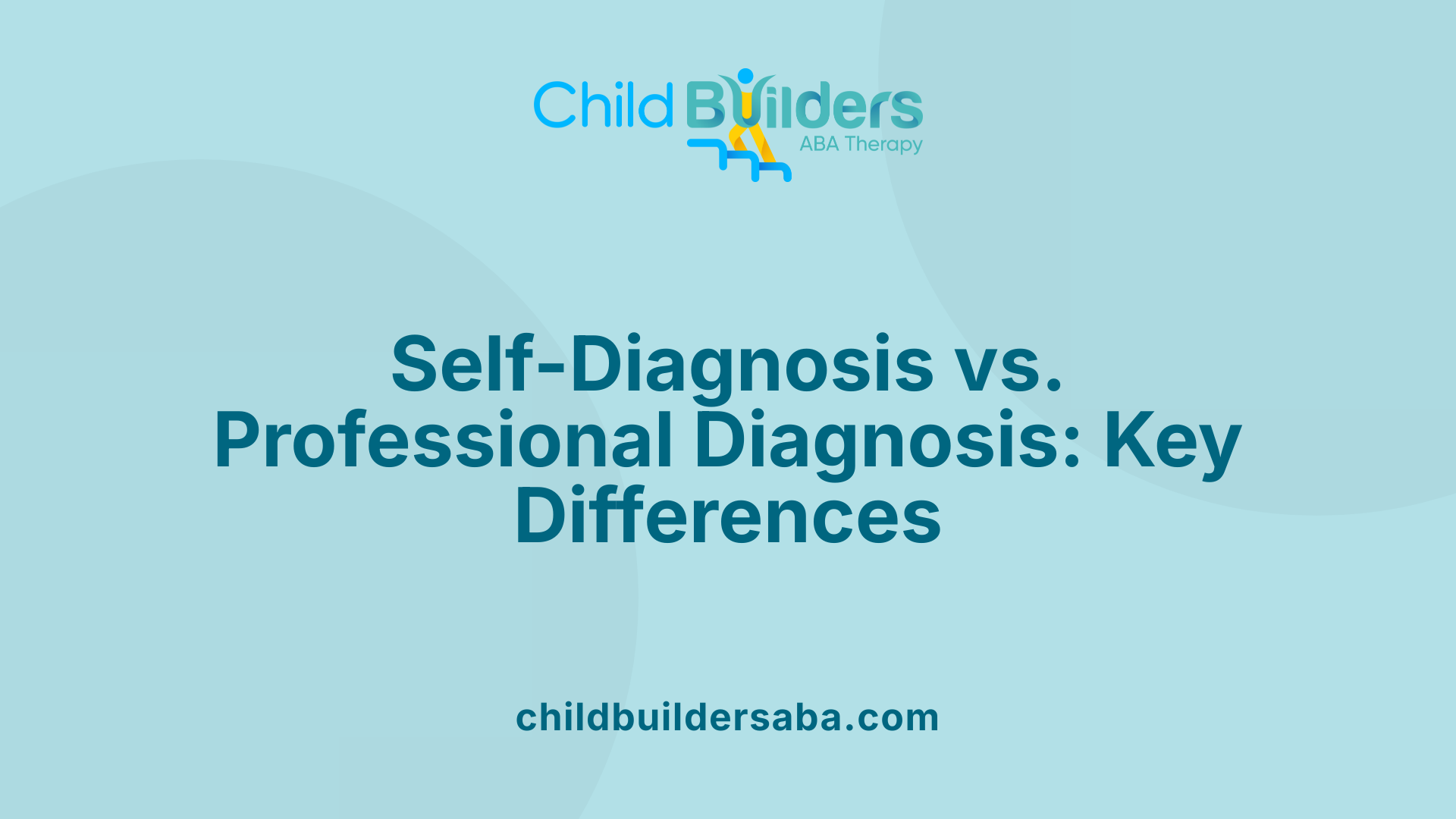
How does self-diagnosis differ from professional diagnosis of autism?
Self-diagnosis of autism occurs when individuals recognize themselves as autistic based on personal research, online screening tools, and their own experiences. This process often involves reflecting on symptoms such as difficulties with social interactions, repetitive behaviors, and sensory sensitivities, without seeking confirmation from a healthcare professional. Many people who self-identify do so because of barriers like cost, wait times, or lack of access to trained clinicians.
In contrast, a professional diagnosis involves a thorough evaluation by qualified clinicians, such as psychologists, neuropsychologists, psychiatrists, or neurologists. These experts use detailed assessments, developmental histories, behavioral observations, and standardized tools aligned with DSM-5 or ICD-11 criteria.
While self-diagnosis can be meaningful and validate personal experiences, it generally lacks the clinical validation necessary for official recognition. A formal diagnosis provides clarity, legitimacy, and access to specific supports such as educational accommodations, disability services, and legal protections like the Americans with Disabilities Act (ADA).
Research shows that many self-diagnosed adults share characteristics similar to those with diagnosed autism, suggesting that self-identification can reflect genuine traits. However, without professional verification, there can be misunderstandings or overlooking comorbid conditions like anxiety or depression.
Ultimately, professional diagnosis remains the definitive method to confirm autism, offering benefits like tailored interventions and resources. Nonetheless, self-diagnosis can be an important step for individuals in understanding themselves better and initiating pathways toward assessment and support.
Resources and Tools for Self-Assessment in Adults
Many adults interested in understanding whether they might be autistic turn to various self-assessment resources available online. These tools serve as preliminary indicators rather than definitive tests for autism diagnosis.
One of the most popular questionnaires is the Autism Spectrum Quotient (AQ) Test, which includes approximately 30 to 50 questions designed to measure traits related to autism, such as social skills, communication, and detail focus. There are many online platforms where individuals can take quick screening tests modeled after the AQ, allowing for easy self-reflection.
In addition to the AQ, other self-assessment tools include the RAADS-R (Ritvo Autism Asperger Diagnostic Scale-Revised) and the Autism Quotient-50 (AQ-50). These tools have been developed through research and are supported by evidence indicating their usefulness in identifying autistic traits.
However, it's important to remember that these self-assessment tools are not diagnostic instruments. They can help individuals gain insight into their behaviors and traits, but they do not confirm a diagnosis. True diagnosis requires a comprehensive evaluation by qualified healthcare professionals, involving developmental history, behavioral observation, and standardized testing.
Online forums, community resources, and autism awareness websites can supplement self-assessment by providing information, support, and guidance on next steps. Nonetheless, a formal clinical assessment remains essential for accurate diagnosis and personalized support.
Risks and Concerns of Self-Diagnosing Autism Independently
Self-diagnosing autism without consulting a healthcare professional involves several dangers. One of the main issues is the risk of misdiagnosis, where individuals might incorrectly identify themselves as autistic when they are actually experiencing other mental health conditions such as anxiety, depression, ADHD, or bipolar disorder. These conditions often require different treatment approaches, and misinterpreting symptoms can delay proper care.
While self-diagnosis can be accessible and empowering, especially for those who face barriers like high costs, long waiting periods, or lack of local specialists, it cannot replace the thorough assessment conducted by trained clinicians. These professionals evaluate developmental history, behavior patterns, and functional impairments, which are critical for an accurate diagnosis.
Relying solely on self-assessment tools and online information can lead to unnecessary anxiety, inappropriate self-treatment, or the neglect of underlying issues needing specific intervention. Moreover, the self-labeling process might marginalize individuals with more severe challenges who struggle to obtain a formal diagnosis due to systemic barriers.
Seeking evaluation from qualified professionals remains the most reliable way to confirm autism, ensuring access to appropriate supports and preventing misunderstandings about one’s mental health. Ultimately, professional assessment provides clarity, validation, and tailored assistance that self-diagnosis alone cannot guarantee.
Why Professional Diagnosis Matters and Its Benefits
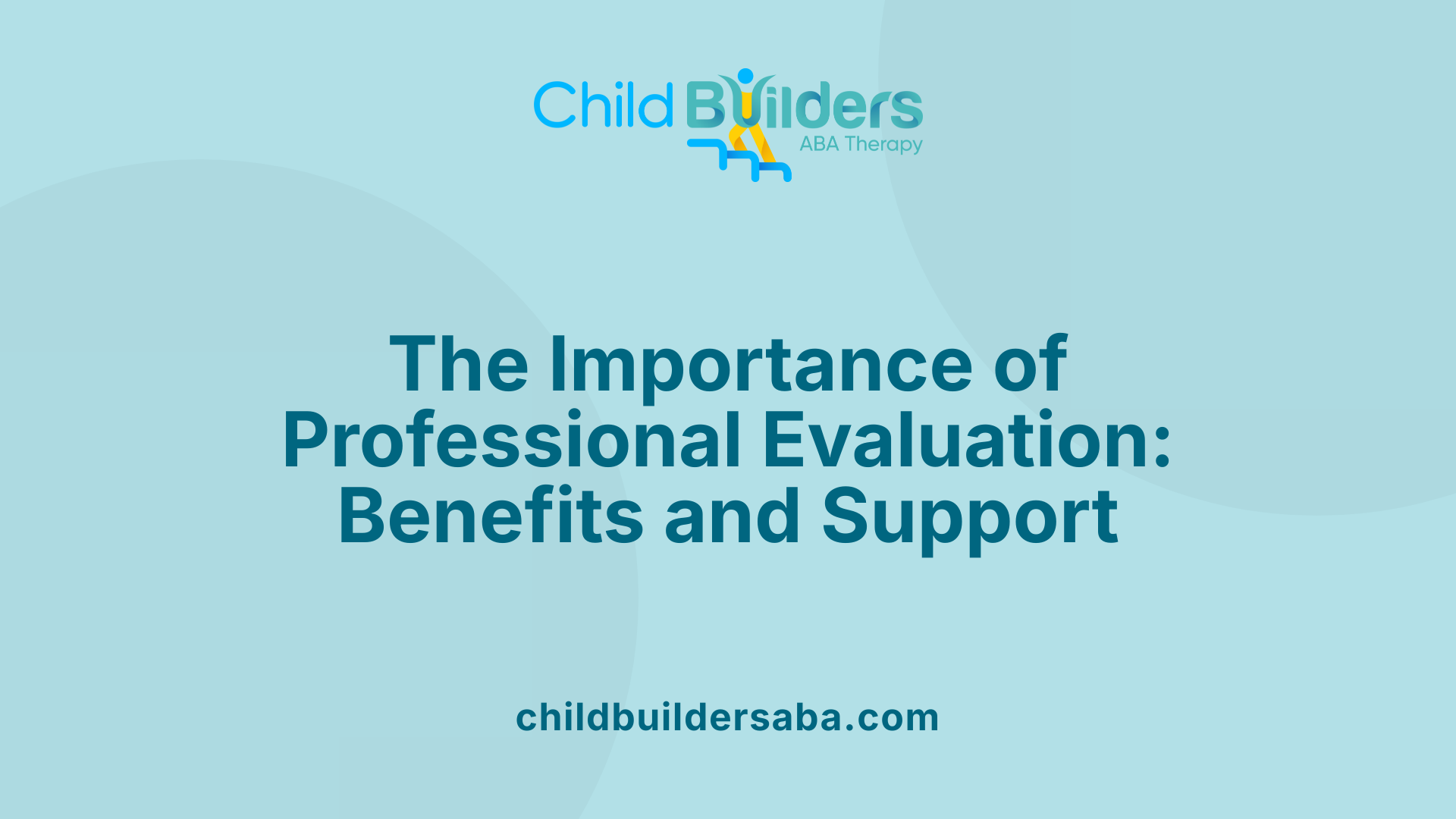
Why is seeking a professional diagnosis important?
Obtaining a formal diagnosis from qualified healthcare professionals holds significant value for individuals who suspect they may be on the autism spectrum. An accurate assessment confirms whether someone meets the diagnostic criteria established by standards like the DSM-5 or ICD-11. This clarity is essential for accessing appropriate support, tailored interventions, and necessary accommodations.
A professional diagnosis provides validation, helping individuals better understand their unique experiences, strengths, and difficulties. It can be a source of relief and self-acceptance, especially for those who have long felt different but lacked official recognition. Moreover, an accurate diagnosis enables connection with the broader autistic community, fostering social support and shared understanding.
Early identification through professional assessment also opens doors to timely intervention, which can improve developmental, educational, and social outcomes. Therapies, social skills groups, and specialized educational resources are often more accessible following a formal diagnosis. While the process may involve costs, long wait times, or emotional barriers, the benefits of accurate evaluation outweigh these challenges.
It is important to recognize that self-diagnosis, although valuable for self-awareness and community connection, cannot replace the nuanced insight gained from comprehensive clinical assessment. Seeking professional help ensures a reliable understanding of one’s condition and guides effective support pathways, ultimately aiding in a fulfilling and empowered life.
Characteristics, Experiences, and Sociocultural Challenges of Self-Diagnosed Autistic Individuals
What are the characteristics and experiences of self-diagnosed autistic individuals, including gender-diverse adults and women?
Self-diagnosed autistic adults, especially women and gender-diverse individuals, often report experiencing a mixture of social, sensory, and perceptual traits that resemble formally diagnosed individuals. Many describe struggles with social interactions, difficulty understanding non-verbal cues, and preferences for routines and predictability.
A significant number of these individuals find resonance with autistic traits through online communities, personal research, and observing traits in family members or children. This self-reflection often leads to increased self-awareness, self-acceptance, and validation of their experiences.
Women and gender-diverse adults tend to be underrepresented in traditional diagnoses due to specific societal stereotypes and the masking of autistic behaviors. Masking involves consciously or unconsciously hiding traits to conform to societal expectations, especially around femininity. As a result, many do not receive an official diagnosis in childhood.
These barriers contribute to feelings of self-doubt, exhaustion, and risk of burnout. Because they lack formal recognition, they often navigate daily life by relying on community support, personal adaptations, and self-described strengths.
Their stories highlight both systemic gaps in healthcare access and the importance of community and self-led understanding. While they may face societal misunderstanding and stigma, many find empowerment through self-identification, which helps them manage their conditions independently.
Overall, self-diagnosed adults, particularly women and gender-diverse individuals, demonstrate resilience and resourcefulness. Their experiences underscore the need for more inclusive diagnostic approaches and supportive services tailored to diverse gender identities and life stages.
Recognizing Autism in Adults and Diagnostic Considerations
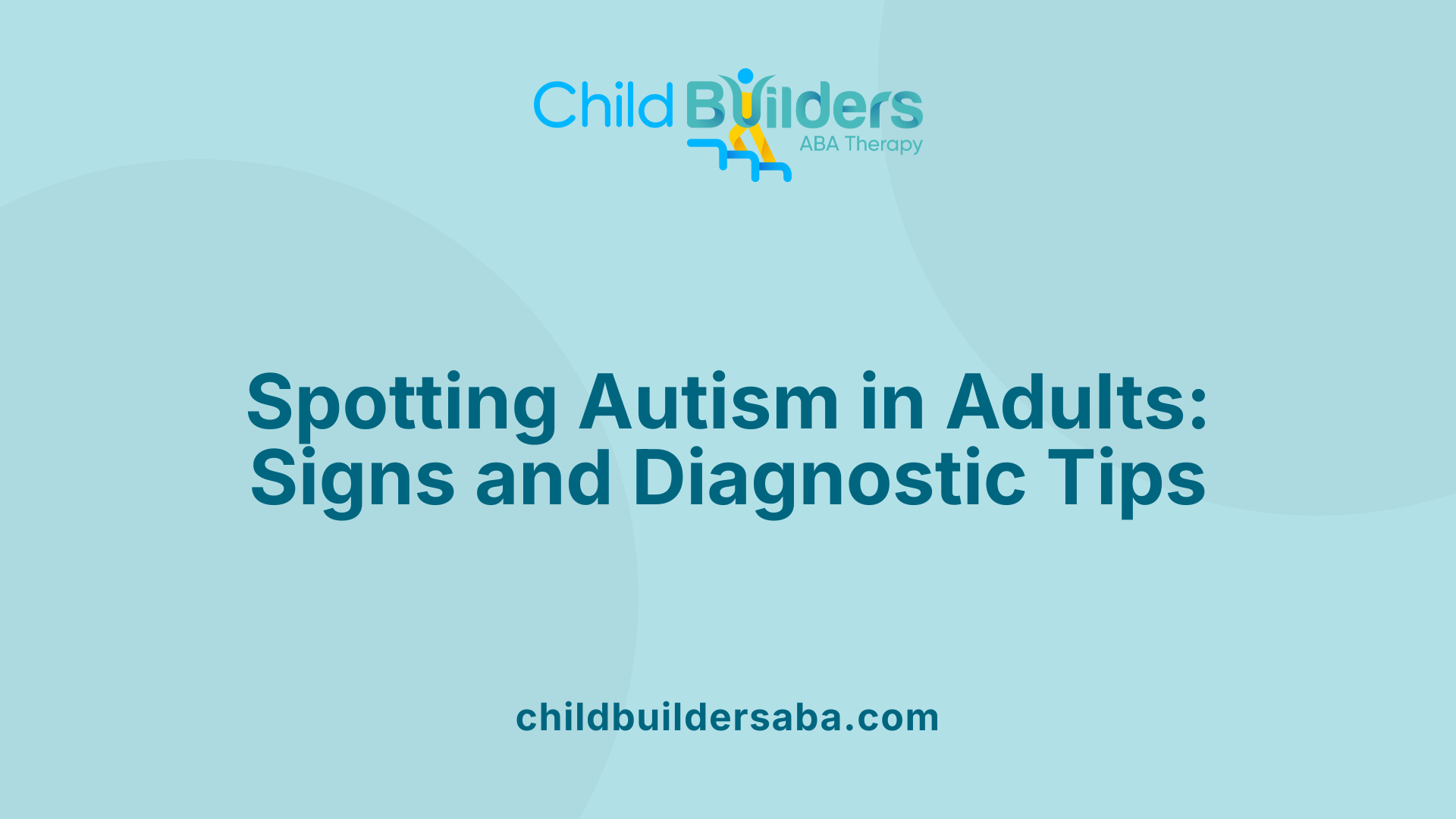
What signs and diagnostic considerations are relevant for recognizing autism in adults?
Identifying autism in adults involves paying attention to specific behavioral signs that may have been overlooked earlier in life. Common indicators include persistent difficulties with social interactions, such as trouble understanding social cues, maintaining conversations, or interpreting others' emotions. Many adults also experience social withdrawal or prefer solitude, which can be mistaken for introversion.
Repetitive behaviors and strong adherence to routines are typical, along with intense interests in particular topics. Sensory sensitivities are also prevalent; for example, hypersensitivity to sounds, lights, or textures can significantly affect daily life.
Because many autistic adults develop masking strategies—techniques to hide their behaviors and appear neurotypical—recognition can be challenging. These masks may lead to mental health issues like anxiety or depression, which can complicate diagnosis.
Diagnostic considerations include using comprehensive assessments tailored for adults. Clinicians evaluate behaviors, developmental history, and current functioning through interviews, observations, and standardized tools like adult-specific screening questionnaires.
Gathering insights from loved ones and understanding the individual's subjective experience are crucial. It is equally important to rule out other conditions such as anxiety, ADHD, or mood disorders that may share similar traits.
Early diagnosis can lead to better access to support, help adults understand their behaviors, and improve overall well-being. Recognizing subtle signs and employing appropriate assessment methods are vital steps in supporting adults on the autism spectrum.
Embracing Neurodiversity and Supporting Self-Identification
Self-diagnosed autism represents a vital aspect of neurodiversity, offering validation, self-awareness, and community connection for many individuals who face systemic barriers to formal diagnosis. While professional evaluation remains the gold standard for clinical confirmation and support access, recognizing the legitimacy of self-diagnosis is crucial in fostering inclusive understanding. As awareness grows and diagnostic tools improve, the focus should be on supporting authentic self-understanding, reducing stigma, and ensuring that all autistic individuals—diagnosed or self-identified—can thrive within society.
References
- Autism Self-Diagnosis: Can You Diagnose Yourself With Autism?
- As an Autistic Psychologist, Here Are My Thoughts on Autism and ...
- Wondering if you're Autistic? | CHOP Research Institute
- Structural Validation of the Autism Spectrum Identity Scale and ...
- Self-Diagnosed Autism: Is It a Valid Diagnosis?
- Autism screening
- I Am Questioning My Identity - Reframing Autism
- Autism: TikTok Leading People to Inaccurate Self-Diagnosis
- Autism diagnosis as an adult






.jpg)






























































































